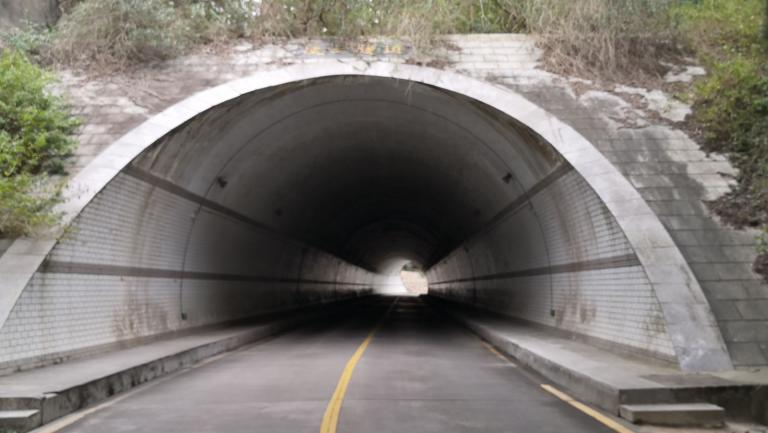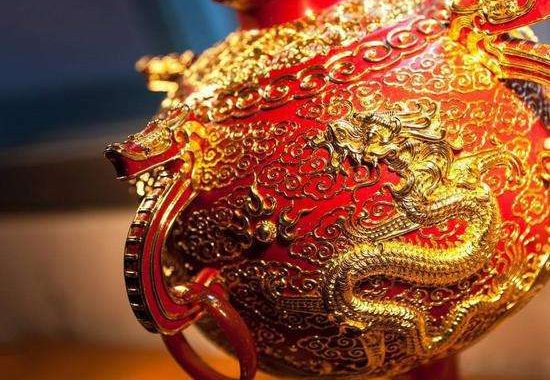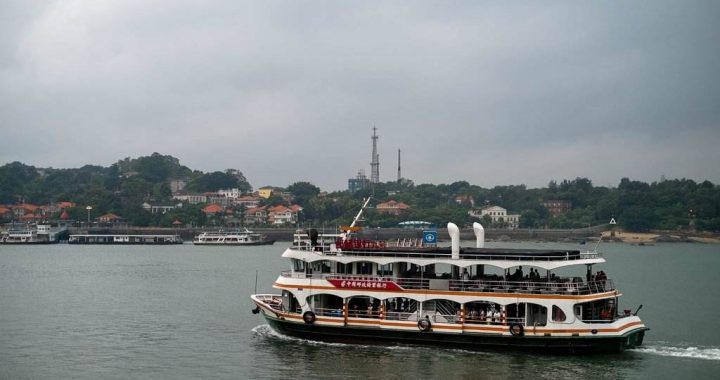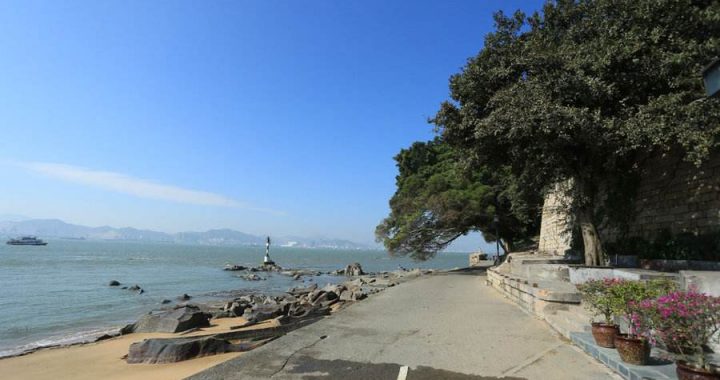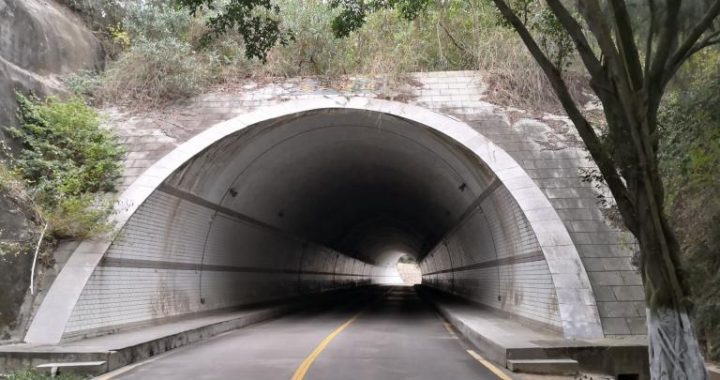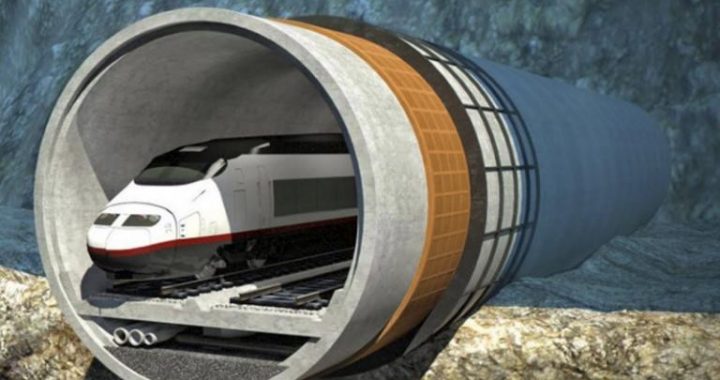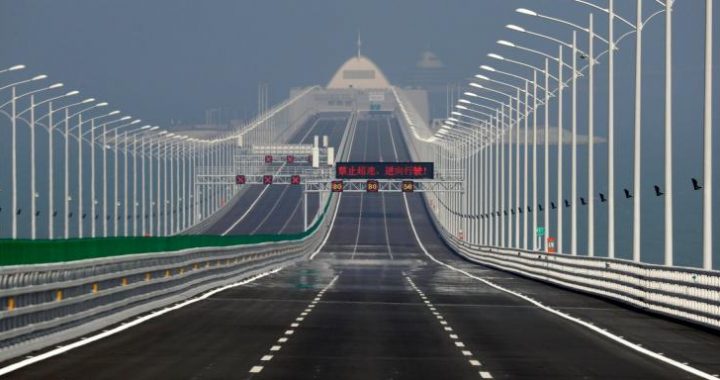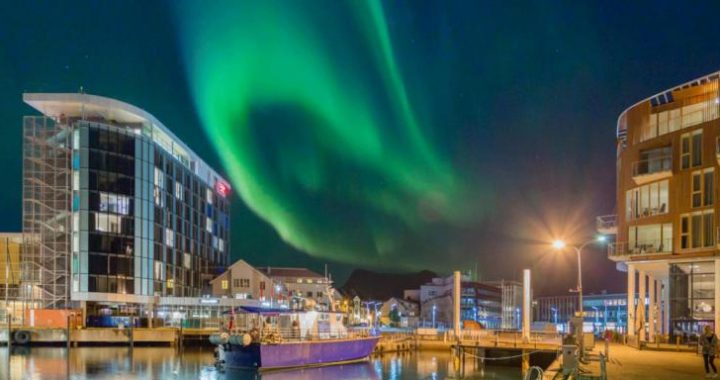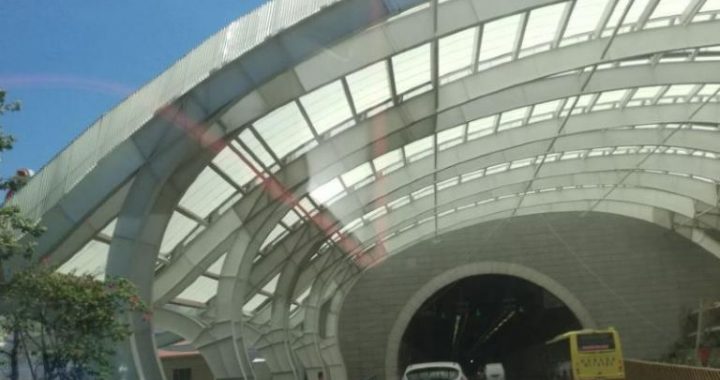Xiang’an Tunnel in Xiamen
12 min readThe Xiangan Tunnel was built to meet the needs of the economic and social development of Xiamen. Xiamen is a bay city consisting of islands and mainland territory. The land area is 1,699.39 square kilometers, and the sea area is over 300 square kilometers. The Xiamen Island has an area of about 128.14 square kilometers. Surrounded by the sea, it was the birthplace of the Xiamen Special Economic Zone. It was the political and economic center of Xiamen City, and also a highly developed urban center.
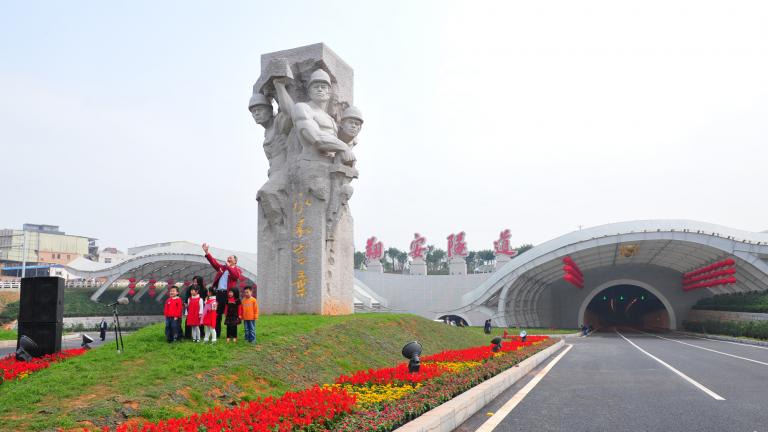
Xiamen’s development couldnt be confined to the tiny island. With the rapid development of “urban integration”, the link between the Minnan Golden Triangle(a mainland economic production area) and the inside and outside of Xiamen Island has becoming increasingly close. The Xiamen Island, surrounded by the sea, experienced an increasingly high demand both for crossing the sea channel and for space in which to develop. Therefore, Xiamen Island began to accelerate the construction of structures which allowed people to cross the sea channel. After the completion of the Xiamen Bridge in 1991, by the end of 1999, Xiamen had also built Haicang Bridge, and in 2005 it launched the construction of the Xinglin Bridge, Jimei Bridge and Xiang’ an Tunnel.
During the preliminary studies for the Xiangan Tunnel project, the Gaoji Seawall, Xiamen Bridge and Haicang Bridge could be used for transportation in and out Xiamen Island. Xiamen Gaoji Seawall was built in the 1950s with only a width of 7 m. There was only a small amount of non-automotive traffic on it. Xiamen Bridge was the first external roadway of Xiamen Island. Built in 1991, it had a length of about 6.599 km, and a width of 23 m, with four lanes, and designed for speeds of up to 60 km/h. Its traffic volume in 2001 was 34,034 cars/day, which was in excess of the designed capacity. It had become very crowded. The development of a third channel(the “East Passageway”) had become increasingly urgent.
These roads allowing passage across the sea channel were not just the for Xiamen’s traffic to pass across, and not just a platform for the Special Economic Zone to launch itself from, but they were also a reflection of the technical strength that China had in the field of bridge construction.They were also a display of marine environmental protection practices,a show of the development of scientific construction concepts and an exhibition of highly-crafted fine art. They had become landscapes and landmarks, asserting their magnificent presence on the surrounding area. They played an important role both in promoting the economic development of the Xiamen Special Economic Zone and in progressing the history of China’s bridge-building capabilities.
The Xiangan Tunnel design adopted the three-hole tunnel design option. The main tunnels have three traffic lanes on each side and the service channel is in the middle. The main tunnels’construction clearance has a clear width of 13.50 m, and a clear height of 5.0 m. The service channel’s construction clearance has a clear width of 6.5 m and a clear height of 6 m. The spacing between the two main tunnels is 52 m and the spacing between the service channel and the main tunnels is 22 m. The maximum driving speed permissible was calculated to be 80 km/h. The deepestpoint of the tunnel is 70 m below the sea level, with a maximum longitudinal gradient of 3%. The left and right channels both have ventilation shafts. Furthermore 12 pedestrian passages to cross between the tunnels and 5 driving passages to cross between the tunnels were constructed, with a spacing of 300 m between each of these cross-passages. This project adopted the drilling and blasting method underground excavation.
As China’s first undersea tunnel, technical innovation and management innovation was needed.With meticulous organization, scientific management, and innovative spirit, they decided to implement the”five control, two management, and one coordination”system(the control of project safety, quality, schedule, and cost, environmental protection, management of contract and information, and the organization coordination), in order to complete all of the construction to a high standard, and realize the goal of building an excellent tunnel and carrying out a demonstration project of China’s first undersea tunnel.
The preparation period of the Xiangan Tunnel lasted for over ten years. Back in 1994, the decision-makers for urban construction in Xiamen made the farsighted decision of listing the preliminary work of the East Passageway (the project name of the Xiangan Tunnel) as one of the keyprojects of the “Ninth Five-Year Plan”and the “Tenth Five-Year Plan”. In 1998, the preliminary work of the East Passageway began. The geological exploration and research programs were launched.After 8 years of preliminary work, the project officially started on September 6,2005.
The 8 years of preliminary work mainly focused on scheme comparison and selection. First, there was a dispute on whether to build a bridge or a tunnel. In the beginning, there were threeoptions, including the tidal power dam, the bridge, and the tunnel.A variety of factors had to be considered, including the sea and land hydrogeology, engineering involved in geological exploration, and the support of relevant domestic and foreign technical research. To this end, the constructors systematically carried out on-site exploration and research programs, heavily researched the field of tunnel construction, and invited both China’s and the world’s tunneling experts to hold seminars.
The Expert Group included: Xiang Haifan, Academician of Chinese Academy of Engineering, and other leading authorities in the bridge industry; Sun Jun, Academician of the Chinese Academy of Sciences; Wang Mengshu and Qian Qihu, Academicians of Chinese Academy of Engineering, and other leading authorities in the underground construction. They all participated in the discussions and the evaluations surrounding the program. At the same time, Norwegian tunnel experts were invited to systematically evaluate the geological conditions, and the United Kingdom and Hong Kong experts were invited to systematically evaluate the tunnel construction risks. These experienced domestic and foreign experts and scholars conducted systematic and in-depth comparison studies and used scientific analysis to assess the pros and cons of the various aspects of the tunnel’s potential construction before proposing targeted measures and schemes.
In the preliminary research, they conducted a wide range of comparative studies and their research left nothing out. They researched the sea area out to 8 km, including the sea area to the east of Xiamen, and proposed more than 10 different options. They did many comparisons between various domestic and international representative bridge types and tunnel construction methods which they thought might be suitable for the Xiangan Tunnel Project.
The word “fight”is an apt way of describing some of scenes which featured during the project argumentation stage. First of all, the supporters for the bridge idea thought there were many successful examples of large bridges crossing rivers and straits and therefore there was more experience for reference. However,a undersea construction would be China’s first attempt at such a feat so there were some risks. Meanwhile, the maintenance costs and operating expenses of the bridge constructions could be kept low. Even the project cost would be much lower than the tunnel construction.
Zeng Chao recalled the scenes which took place back then. He said that although the bridge experts presented three or four advantages in favour of constructing a bridge, the tunnel construction had more advantages, including good functionality, occupying a smaller amount of space, less susceptible to the effects of earthquakes or war,a lesser impact on the surrounding environment, not being affected by shipping or aviation requirements, and the flexible handling of rescue operations.
Zeng Chao said,”Although zero experience in tunnel construction was indeed a worrying factor, the supporters all agreed that it would be a groundbreaking step for China, and that China was in full possession of the strength needed to construct a undersea tunnel.”
Sun Jun, one of the preliminary study participants, one of China’s leading authorities in the nnel industry and a senior academician of Chinese Academy of Sciences, said that, based on China’s priority,i.e. development, the tunnel was the most appropriate solution.
Xiamen Island was surrounded by the sea with the Gaoqi Seawall, the Xiamen Bridge and the Haicang Bridge all affecting the history of Xiamen Island’s the flow of traffic into and out of the island for 50 years. However, during the typhoon season every year, these passages were blocked, so vegetables would become more expensive on the island. The Xiangan Tunnel was an “all-weather”passage, meaning that, lying under the sea, it would not be affected by weather conditions.
Meanwhile, Qu Shouxin, the Deputy Director of Chief Supervision Engineer Office of Xiang’ an Tunnel engineering field, said,”The tunnels have a longer life. The design lifetime of the Xiang’ an Tunnel is one hundred years, but a bridge may not last so long. In other words, in order to prolong the lifetime of bridges, we will have to spend a lot more money.”
The development and evolution of island city into a gulf city stems from its harbor. Wutong and Liuwudian are two old ports which are used for the transport of international sea freight and rollon-roll off shipments. Bridge construction however, would limit the ships’ entry into the ports. Academician Sun Jun once said,”In order for an ordinary ship to pass underneath the bridge, the bridge would have to be built even higher than a Ferris wheel. To achieve this, the approach for the bridge would have to be several kilometers long, and a car would not be able to get off the bridge until they reach the Hubian Reservoir(near Central Xiamen Island).”The construction of an approach of several kilometers would also be highly energy-consuming.
At the same time, the Xiamen Gaoqi International Airport is near the project area. In order to ensure flight safety, there are strict building height limits in the surrounding area. If using a long-span bridge design, the pylon height would have to be lower than the stipulated aviation clearance limit. Calculations showed that the limit height of the pylon was 144 m-160 m(according to the Yellow Sea Height Datum). This height would not meet that required for the construction of a long-span bridge, and it would limit traffic into the ports.
From the aspect of environmental protection, the construction of the bridge pier would impact the marine environment,”driving away”the Chinese White Dolphin. Chinese White Dolphins are a treasure of the Xiamen ports. The local fishermen have a long history of protecting them. They consider the Chinese White Dolphin as the “Marine Guardian Angel”. The Chinese White Dolphin is also an endangered marine species. The sea area of the East Passageway is located right in the middle of Chinese White Dolphin National Nature Reserve, so, without impact to the original natural landscape or the marine environment, the Xiangan Tunnel would protect marine life, achieve aharmonious relationship between humans and the nature, and become a sustainable development path.
Now take the perspective of being resistant against tremors and being resistant to the potential damage that could be suffered in wartime.A bridge, as an above-ground structure, would suffer more than from an earthquake than any structures in the underground area. The experience of the Tangshan Earthquake in China, and from many earthquakes in Japan, shows that the amount of damage of underground structures is much lower than that of bridges. Furthermore, if a war breaks out,a bridge would be an obvious target which could lead to greater damage. However, the normal weapons that are currently being used can only destroy the architecture at the tunnel entrance, which is easier to repair after it has been damaged. From these perspectives,a tunnel is more advantageous than a bridge.
In addition,a utility tunnel could be constructed during the tunneling. This meant that the tunnel was more advantageous than the bridge because it could lay power lines, modern communications equipment, and large water pipes. Therefore, although the operating expenses of carrying out tunneling are relatively high, the overall economic and social impacts go far beyond those of the bridge.
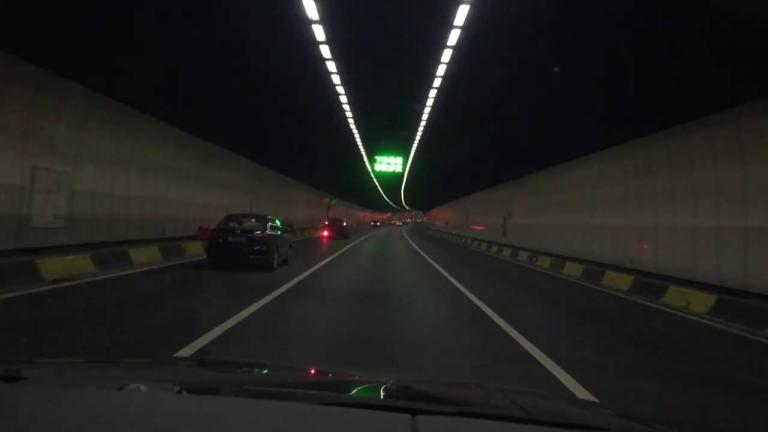
The 80-year-old Mr. Makoto Kito, head of the Japanese technical delegation, had personally participated in the construction of the Seikan Tunnel in Japan.”The Japanese constructed the Seikan Tunnel just after the World War II. Japan was almost in ruins. Despite poor economic and technicalgrounding, the tunnel was finally built.”Makoto Kito at one point gave the builders some words of encouragement,”I believe that the Chinese people have the ability and the grounding to complete the Xiangan Tunnel successfully!”
While research was being carried out in to how the tunnel would be constructed, the specific construction methods were studied in detail. The undersea tunnel could be divided into a underseasegment and a land segment. In view of the above characteristics of the undersea tunnel, the basic methods at present were the drilling and blasting method, the tunnel boring machine method(TBM) or the immersed tube method. In addition, using a combination of these methods could be adopted for the construction of these tunnels.
The immersed tube method was rejected first. The immersed tube method requires the transfer of prefabricated parts to the sea(or river) surface, and put them into dredged foundation trenches one by one. This was a popular method in underwater tunnel constructions at the time, but this method would have a big impact on the surrounding environment, so it was finally excluded.
Thus, the program was then focused on the drilling and blasting method and the tunnel boringmachine method(TBM). The constructors analyzed that the drilling and blasting method had six major advantages, such as: suitability for all-terrain conditions; its established design and construction experience; the finished product’s ability to withstand all kinds of natural disasters and wars after completion; smaller impact on the environment during construction, without affecting aviation and shipment during the construction; the short construction period and the low investment; and the ability to adapt to the changes and adjustments in the cross-sections of the tunnels.
By contrast, although the tunnel boring machine method(TBM) has a higher degree of mechanization, little damage to the surrounding rocks and less danger of support loss, chip off-falling or collapse, it has the disadvantages of: having a higher cost in machinery purchasing, transportation and installation; poorer adaptability in dealing with the extremely soft surrounding rocks in weathered slots where these undersea rocks has been weathered away; the dramatic increased cost; and fact that the excavation speed reduces when tunneling hard rock with the hardness over 200 MPa. At the same time, the Xiamen Xiangan Tunnel was a large three-lane tunnel, but the land segment at the entrance and the undersea weathered slot were all located in the completely and strongly weathered strata, while the rest of the undersea rock was hard granite, meaning that the tunnel construction would have to pass through rock strata of varying degrees of hardness. It is also very difficult to select the right design for the boring machine, and getting the selection right is important because the boring machines have poor adaptability. Therefore, the drilling and blasting method was chosen.
Thus, after the factors of geological conditions, construction risk, harbor resource protection, marine environment protection, anti-seismic capacity, damage resistance ability in wartime, and all-weather operation ability during typhoons and other natural disasters had been considered together, the constructors’ plans moved from concept into reality. On February 7,2005, the National Development and Reform Commission officially replied the research report of the Xiamen East Passageway, and approved the drilling and blasting method subsurface tunneling. In the end, after all the debate, the tunnel was victorious over the bridge. It is worth mentioning that this was the first time a tunnel had ever beaten a bridge after deciding on the most appropriate method for any previous cross-sea or cross-river passages. It was the unique geographical environment of the mountain-sea connection of Xiamen that gave birth to China’s first undersea tunnel.
After the Xiangan Tunnel had opened, in the period from March 8 to 15,2005, Xiamen helda period of voting for the naming of the “East Passageway”. In the end the voters suggested the name of “Xiang’ an Tunnel”. They thought that the name”Xiang’ an Tunnel”would help to make the tunnel more popular and aid in its future development. The word xiangan in Chinese means peace and luck rising in the air. Furthermore, the tunnel led to Xiamen’s Xiangan District. Naming the tunnel in line with the location also followed the basic principles of toponymy.
In just one week, the name collecting hotline was called over 1,000 times, and over 100 letters and over 200 online votes were received. On April 25,2005, Xiamen declared that the official name of the”East Passageway”would be “Xiangan Tunnel”. It was reported that, the name”Xiangan Tunnel”got a lot of votes, showing the enthusiasm of the Xiangan people and their expectations for China’s first undersea tunnel.
